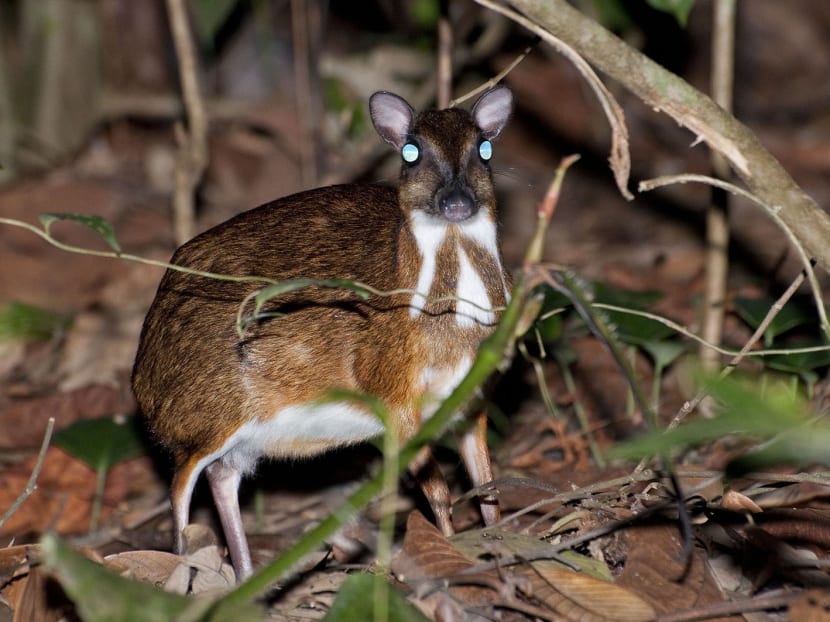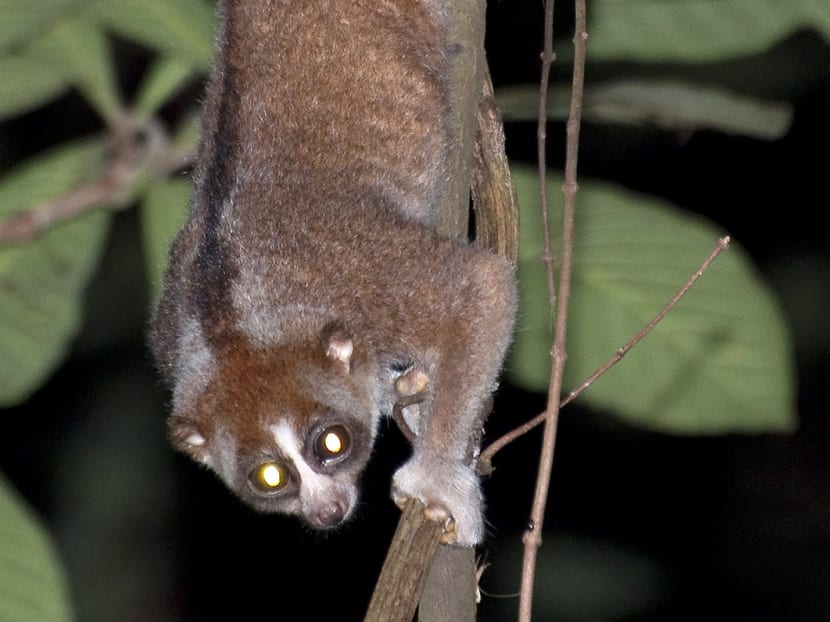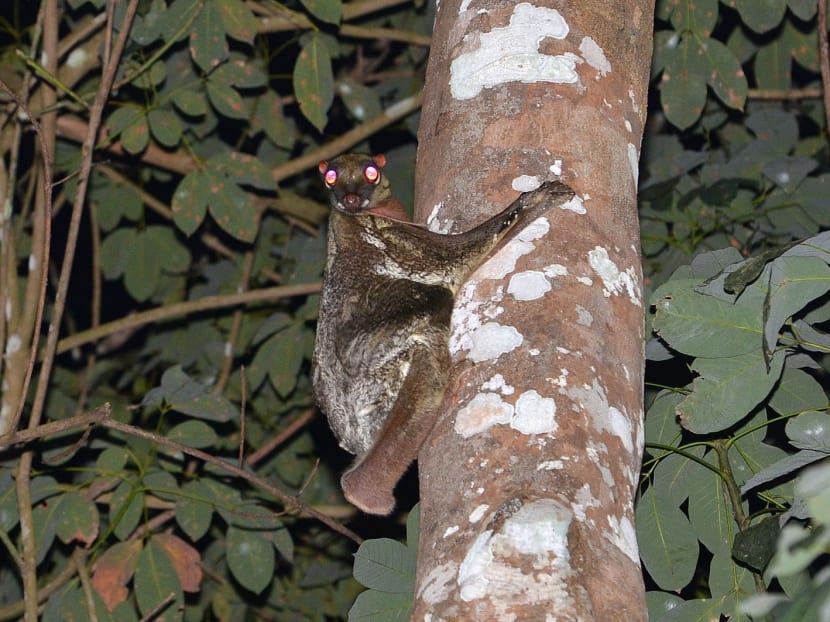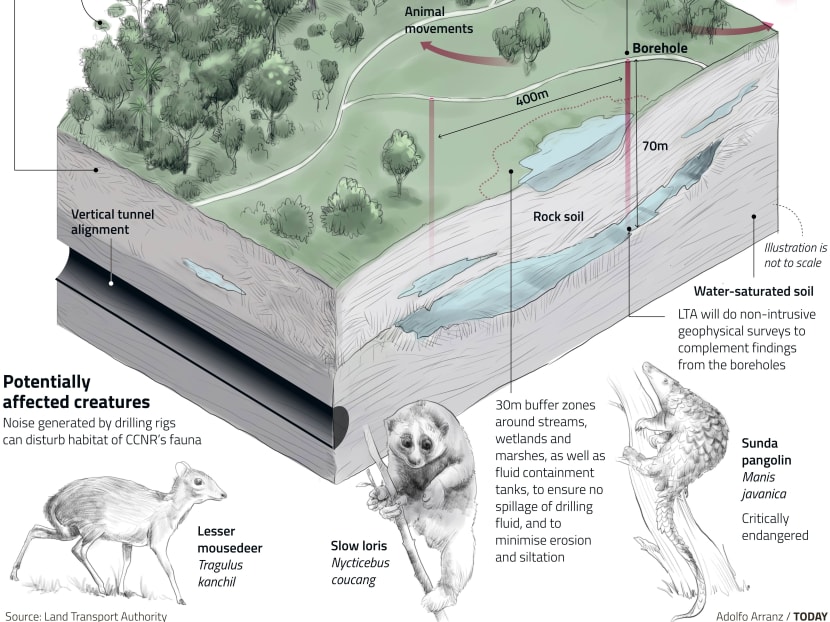Impact of Cross Island work on MacRitchie significant without LTA mitigation measures
SINGAPORE — The impact on MacRitchie fauna — like the lesser mousedeer and the slow loris — from site investigation work for the future Cross Island MRT Line would be “large” if mitigation measures were not adopted following a report commissioned by the Land Transport Authority (LTA) now open for public inspection.



SINGAPORE — The impact on MacRitchie fauna — like the lesser mousedeer and the slow loris — from site investigation work for the future Cross Island MRT Line would be “large” if mitigation measures were not adopted following a report commissioned by the Land Transport Authority (LTA) now open for public inspection.
With a high number of animal species near the alignment option that cuts beneath the Central Catchment Nature Reserve, wildlife would be significantly disturbed if not for restricted access that the LTA has agreed to implement. Most animals will be able to move far away enough from the noise generated by drilling rigs and other machines, but concerns remain over some creatures such as the lesser mousedeer, slow loris, colugo and pangolin.
The mousedeer, slow loris and critically endangered Sunda pangolin have distinct home ranges, and movement away from the noise or human activities “may potentially bring such fauna into territorial conflict such as increased competition for food and shelter, particularly in a highly fragmented habitat like that in the CCNR”, stated the Environmental Impact Assessment (Phase One) gazetted by the LTA last Friday (Feb 5).
The LTA announced mitigating measures for site investigation work last Friday, but did not detail the potential impact on wildlife mentioned in the report consisting of about a thousand pages, which TODAY inspected yesterday.
Phase One of the report, done by an external consultancy engaged by the LTA, quantifies the impact of site work to determine rock profiles for two alignment options of the Cross Island Line, while a second phase to be completed by the end of the year will assess the impact of construction and operation of the future MRT line.
(click to enlarge)

Measures to reduce the environmental impact of site investigation work include 30m buffer zones around streams, wetlands and marshes; siting boreholes on existing trails and clearings; reducing the number of boreholes from 72 to 16; and working with the National Parks Board for careful execution of surveys.
Enclosures around borehole-drilling machines will cut noise to around 70 to 80 decibels, roughly equivalent to the level of urban traffic noise. According to the EIA report, noise barriers are unfeasible because of space constraints along trails and the need to minimise intrusion.
The report also noted the potential impact of worksites outside the nature reserve. For instance, a form of drilling called horizontal directional coring will take place at the Singapore Island Country Club’s Bukit golf course, where the Sunda pangolin has been spotted foraging at night.
As horizontal directional coring will take place 24 hours a day for four to 12 months at each location, lights and human disturbance will potentially have an ecological impact, the report said.
According to Environmental Resources Management — the consultancy hired by LTA — a large impact means an entire habitat, or a significant proportion of it, is affected and long-term viability is threatened. It could also mean entire populations of species are affected, or populations of species listed as critically endangered, endangered or vulnerable in the Singapore Red Data Book are affected.
With mitigating measures, the impact of site investigation work will be reduced to “mainly moderate” levels, with the possibility of escalation to major levels only if measures are not observed. Controls will also be in place for unplanned events such as accidental spills and water pollution from site runoff. The emphasis is to reduce impact to levels as low as reasonably practicable, said the EIA consultant.
The slew of measures recommended includes: Having surveyors walk in single file and use the same route in and out of the nature reserve, ensuring no littering and meals eaten only in designated areas, no clearance of vegetation, and allowing only one type of geophysical survey to be conducted each day.
Those involved in the project should keep open lines of communication so work schedules can be adjusted to avoid cumulative impact, the consultant added.
Nature Society (Singapore) council member Tony O’Dempsey, who is part of the working group consisting of fellow nature experts engaged by the LTA, said the group had pushed hard for restricted access to off-trail areas of the reserve. “So what we’ve avoided there is clearance of forest and siltation of streams and significant reduction in the number of boreholes,” he said.
Meanwhile, other nature enthusiasts banding together under the Love Our MacRitchie Forest movement yesterday renewed their call for the Cross Island Line to be rerouted south near Lornie Road to avoid the nature reserve entirely. Lapses in safety and vigilance will occur despite mitigation measures, they said in a statement.
“The fact that the EIA report forecasts ‘major’ impacts if mitigation measures were to fail is reason enough to avoid conducting any site investigation works within the nature reserve boundaries altogether,” they said, adding that the only acceptable impact should be zero impact.
Studies have shown that noise levels of 75 to 80 decibels are likely to result in changes to birds’ breeding habits and territorial defence activities, and are likely to be detrimental to insects, for instance, said the group.
Nature walks and other outreach activities will be held next month to acquaint more people with the reserve, with more details at www.lovemacritchie.wordpress.com.






